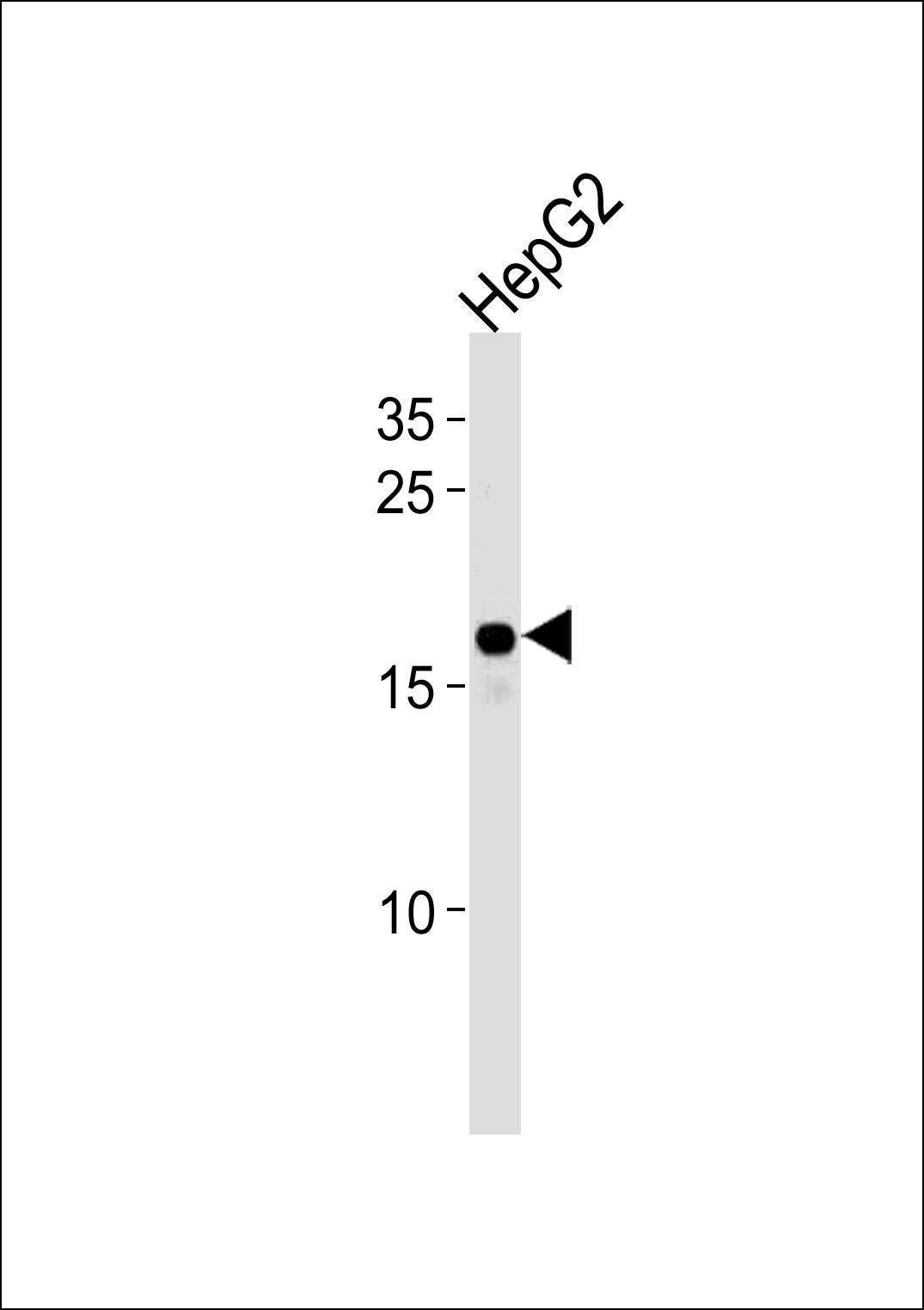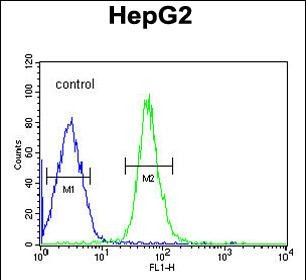HMGA2 Antibody (C-term)
Affinity Purified Rabbit Polyclonal Antibody (Pab)
- 产品详情
- 文献引用 : 2
- 实验流程
- 背景知识
Application
| FC, WB, E |
|---|---|
| Primary Accession | P52926 |
| Other Accession | P52927, NP_003475.1, NP_003474.1 |
| Reactivity | Human |
| Host | Rabbit |
| Clonality | Polyclonal |
| Isotype | Rabbit IgG |
| Calculated MW | 11832 Da |
| Antigen Region | 64-92 aa |
| Gene ID | 8091 |
|---|---|
| Other Names | High mobility group protein HMGI-C, High mobility group AT-hook protein 2, HMGA2, HMGIC |
| Target/Specificity | This HMGA2 antibody is generated from rabbits immunized with a KLH conjugated synthetic peptide between 64-92 amino acids from the C-terminal region of human HMGA2. |
| Dilution | FC~~1:10~50 WB~~1:1000 E~~Use at an assay dependent concentration. |
| Format | Purified polyclonal antibody supplied in PBS with 0.09% (W/V) sodium azide. This antibody is purified through a protein A column, followed by peptide affinity purification. |
| Storage | Maintain refrigerated at 2-8°C for up to 2 weeks. For long term storage store at -20°C in small aliquots to prevent freeze-thaw cycles. |
| Precautions | HMGA2 Antibody (C-term) is for research use only and not for use in diagnostic or therapeutic procedures. |
| Name | HMGA2 |
|---|---|
| Synonyms | HMGIC |
| Function | Functions as a transcriptional regulator. Functions in cell cycle regulation through CCNA2. Plays an important role in chromosome condensation during the meiotic G2/M transition of spermatocytes. Plays a role in postnatal myogenesis, is involved in satellite cell activation (By similarity). Positively regulates IGF2 expression through PLAG1 and in a PLAG1-independent manner (PubMed:28796236). |
| Cellular Location | Nucleus. |
For Research Use Only. Not For Use In Diagnostic Procedures.

Provided below are standard protocols that you may find useful for product applications.
BACKGROUND
This gene encodes a protein that belongs to the non-histone chromosomal high mobility group (HMG) protein family. HMG proteins function as architectural factors and are essential components of the enhancesome. This protein contains structural DNA-binding domains and may act as a transcriptional regulating factor. Identification of the deletion, amplification, and rearrangement of this gene that are associated with myxoid liposarcoma suggests a role in adipogenesis and mesenchymal differentiation. A gene knock out study of the mouse counterpart demonstrated that this gene is involved in diet-induced obesity. Alternate transcriptional splice variants, encoding different isoforms, have been characterized.
REFERENCES
Mu, G., et al. Hum. Pathol. 41(4):493-502(2010)
Pillas, D., et al. PLoS Genet. 6 (2), E1000856 (2010) :
Yang, T.L., et al. Ann. Hum. Genet. 74(1):11-16(2010)
Wei, J.J., et al. Am. J. Surg. Pathol. 34(1):18-26(2010)
Tay, Y., et al. Stem Cell Rev 5(4):328-333(2009)
Schwanbeck, R., et al. J. Biol. Chem. 275(3):1793-1801(2000)
Chau, K.Y., et al. Nucleic Acids Res. 23(21):4262-4266(1995)
Schoenmakers, E.F., et al. Nat. Genet. 10(4):436-444(1995)
Ashar, H.R., et al. Cell 82(1):57-65(1995)
Schoenmakers, E.F., et al. Genes Chromosomes Cancer 11(2):106-118(1994)
Manfioletti, G., et al. Nucleic Acids Res. 19(24):6793-6797(1991)
终于等到您。ABCEPTA(百远生物)抗体产品。
点击下方“我要评价 ”按钮提交您的反馈信息,您的反馈和评价是我们最宝贵的财富之一,
我们将在1-3个工作日内处理您的反馈信息。
如有疑问,联系:0512-88856768 tech-china@abcepta.com.






















 癌症的基本特征包括细胞增殖、血管生成、迁移、凋亡逃避机制和细胞永生等。找到癌症发生过程中这些通路的关键标记物和对应的抗体用于检测至关重要。
癌症的基本特征包括细胞增殖、血管生成、迁移、凋亡逃避机制和细胞永生等。找到癌症发生过程中这些通路的关键标记物和对应的抗体用于检测至关重要。 为您推荐一个泛素化位点预测神器——泛素化分析工具,可以为您的蛋白的泛素化位点作出预测和评分。
为您推荐一个泛素化位点预测神器——泛素化分析工具,可以为您的蛋白的泛素化位点作出预测和评分。 细胞自噬受体图形绘图工具为你的蛋白的细胞受体结合位点作出预测和评分,识别结合到自噬通路中的蛋白是非常重要的,便于让我们理解自噬在正常生理、病理过程中的作用,如发育、细胞分化、神经退化性疾病、压力条件下、感染和癌症。
细胞自噬受体图形绘图工具为你的蛋白的细胞受体结合位点作出预测和评分,识别结合到自噬通路中的蛋白是非常重要的,便于让我们理解自噬在正常生理、病理过程中的作用,如发育、细胞分化、神经退化性疾病、压力条件下、感染和癌症。







